What is App Store Optimisation?
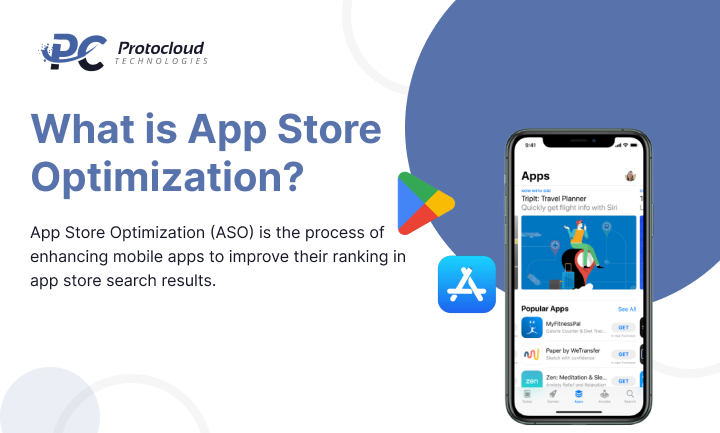
App Store Optimisation or ASO, is the act of optimising mobile apps to get them a better ranking in app store search listings.
Think of stores like Google Play, Apple App Store, or Amazon. The better you rank, the more people notice your app. And more visibility means more traffic to your app page and more downloads.
In simple terms, ASO is similar to Search Engine Optimisation (SEO)—but for apps. While SEO helps websites rank on Google, ASO helps your app rank on the app store search page.
Why ASO is Essential
ASO is a key part of every app marketer’s toolkit.
Here’s why:
- Organic users are usually more engaged and loyal than paid users.
- Organic downloads lower your overall user acquisition cost (because ASO is free!).
- Localization enables you to reach users across multiple markets and languages.
According to Google, half of all apps are discovered in app stores. If you’re not doing ASO, you’re missing out on the largest discovery channel around.
App Store Optimization (ASO) is one of the most effective ways to increase your app’s growth.
It attracts loyal organic users, reduces your user acquisition cost, and drives downloads, engagement, and revenue.
And when you add professional app store optimization services into the mix, your app gains a stronger presence across global markets.
How Do You Measure ASO Results?
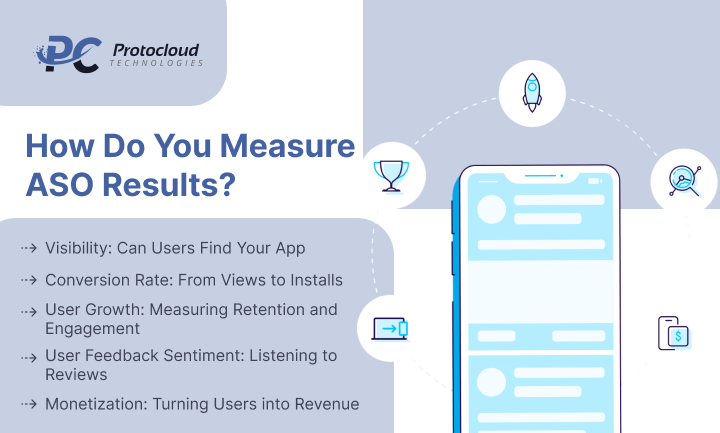
Setting clear ASO KPIs is the first step to tracking your results. However, to gain accurate insights into your app ranking, you need to look deeper.
Along with downloads, monitor visibility, conversion rate, user growth, feedback, and revenue. Each of these plays a role in how well your app performs.
Let’s break them down.
1. Visibility: Can Users Find Your App?
The first step in ASO is measuring app visibility. If your app isn’t visible, no one will download it.
Key things to track:
- Keyword ranking
- Top chart ranking
- Category ranking
- Featured app listings
- Similar app listings
More visibility means easier discovery and faster organic growth. Professional app store optimization services often focus heavily on this stage because it directly impacts the number of installs.
2. Conversion Rate: From Views to Installs
Once users find your app, focus on the conversion rate—how many actually install it. This shows how many visitors actually install your app.
Metrics to track include:
- Click-through rate (CTR) — how many people click your app page.
- Click to install — how many people download after visiting your app page?
You can find this data inside the app store or by using a mobile measurement partner (MMP). A higher conversion rate means your app page optimization (title, visuals, description) is doing its job.
3. User Growth: Measuring Retention and Engagement
User growth goes beyond simple installs. It tells you if your app is keeping users active over time.
Here’s what to measure:
- App installs
- Organic uplift
- Daily active users (DAU)
- Monthly active users (MAU)
- App retention rate
An MMP can help track these numbers. A strong DAU/MAU ratio indicates that users are consistently finding value in your app.
4. User Feedback Sentiment: Listening to Reviews
Metrics tell one side of the story. User feedback sentiment tells the other.
You can measure this by:
- Checking app reviews directly inside the store.
- Using customer feedback tools to analyze user sentiment.
Positive reviews boost your category ranking and visibility in similar app listings. Negative reviews can lower your ASO results, so responding and improving is key.
5. Monetization: Turning Users into Revenue
The last area to measure is app monetization. Downloads are beneficial, but you also need to generate a profit.
Track these:
- App revenue
- Average revenue per user (ARPU)
- Lifetime value (LTV)
Again, an MMP helps track these metrics. A healthy ARPU and strong LTV mean your app attracts the right users and generates long-term value.
How to Get Started with App Store Optimisation

Before creating your ASO strategy, get organized. Planning first is key to ASO success.
1. Conducting App Store Optimisation In-House or with a Vendor
First, decide whether to manage app store optimization (ASO) yourself or work with an external agency or ASO vendor.
There’s no correct answer. It depends on your budget, team expertise, and time availability.
- An in-house marketing team gives complete control over app store listing optimization.
- An ASO vendor has the experience and tools to help your app perform better and faster.
Professional app store optimization services can support either approach, ensuring your strategy is effective and results-driven.
What to Look for in an ASO Vendor
If you hire a vendor, ensure they provide:
- Continuous analysis and optimizations for long-term growth.
- Competitor research is part of their service.
- Up-to-date knowledge of App Store and Google Play Store changes.
A good vendor keeps your app visible, optimized, and ahead of the competition.
2. Competitor Research: Understanding the Landscape
Competitor research is critical for effective ASO. It shows the current market and how your app can stand out.
Studying competitors reveals what works and what doesn’t, providing valuable insights for your own ASO strategy and increasing the chances of achieving high rankings.
3. Analyze the Top Five Apps
Start with your app’s primary category. Examine the top five apps individually. Focus on:
- Design elements
- Highlighted features
- App copy
Repeat this process for your secondary category and all featured apps. If your app is on both stores, analyze App Store and Google Play separately — results can differ.
4. Identify Strengths and Weaknesses
Notice similarities and differences in each app listing.
- This shows what drives app ranking.
- It highlights opportunities for a competitive advantage when you create your own listing.
Focus on what top apps do well and identify gaps left by lower-ranking apps.
5. Compare Low-Ranking Apps
Look at apps with poor performance. Ask:
- What are they doing differently?
- How can you improve upon these aspects?
This ensures no step is overlooked. Apps that do proper competitor analysis enhance their opportunities for having high rankings.
How to Optimize Your App Store Listing for iOS and Android
Make your app listing fit each platform to achieve the best results. iOS and Android users behave differently. Optimizing your listing for each platform can significantly enhance your app’s performance.
The App Store and Google Play Store look at how users interact with their apps. They track what brings the most app revenue and use this to create app algorithms. These algorithms favour listings that perform nicely and give a good user experience.
Here are the top-ranking factors for each platform.
Apple App Store Ranking Factors
For iOS, the Apple App Store focuses on three main App Store ranking factors:
- Name – Your app’s name is crucial for visibility
- Subtitle – A short description that shows your app’s value.
- URL – Helps with branding and search indexing.
Optimizing these parts is vital for platform-specific ASO. It influences your app’s ranking, visibility, and overall downloads. Using app store optimization services can make this process easier and more effective.
Google Play Store Ranking Factors
For Android, the Google Play Store uses slightly different ranking factors:
- Title – The primary name of your app with key keywords.
- Short description – A quick summary that attracts users.
- Long description – A detailed explanation of features, benefits, and value.
Google Play also offers store listing experiments. You can create alternate product pages to test which version performs best. This improves conversion rates, app income, and user engagement.
How to Optimize App Store Keywords

Once your app listing is ready, the next big step is keywords — the exact words people type when searching for apps like yours.
Just like SEO (search engine optimization) helps content rank on search engines, the right keywords help your app appear in app store search results. Utilising professional app store optimization services can expedite and improve the effectiveness of this process.
Choose keywords that highlight how your app solves problems, what makes it unique, who it’s for, and what users can do with it. With this in mind, you can start your keyword research.
What is Keyword Research and How to Get Started?
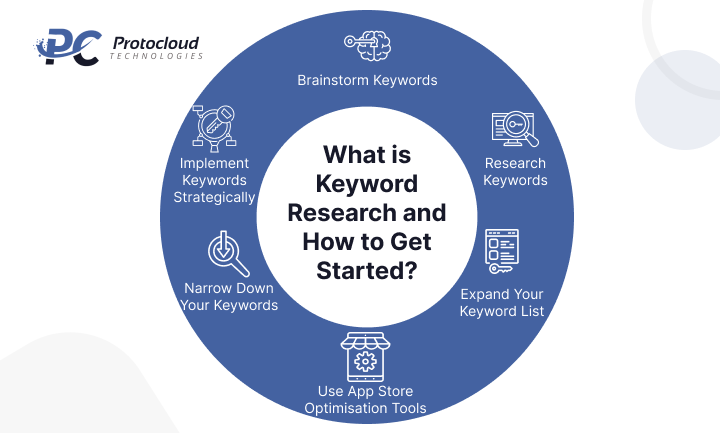
Step 1: Brainstorm Keywords
Think of terms, phrases, and questions your users may search for. Begin broad, then drill down into your niche. Focus on:
- Problems users solve with your app
- Unique app features
- User interests
- Target audience
- User location
- How users interact with your app
Step 2: Research Keywords
Read reviews from users to learn the language that people use to label your app. If your app hasn’t launched, study competitor reviews, titles, and descriptions for keyword ideas
This gives insight into effective keywords and popular phrasing in your category.
Step 3: Expand Your Keyword List
Use your list and check a thesaurus for synonyms. Check both the App Store and Google Play for keyword ideas. Note the auto-complete suggestions—these indicate trending searches.
Step 4: Use App Store Optimisation Tools
App store optimization tools make keyword research easier. Top tools include:
- AppRadar
- Keyword Tool
- ASO Desk
- AppTweak
These tools show what users in your target region are searching for. Keywords often differ between the App Store and Google Play Store, so tailor your approach accordingly for each platform.
They also help you analyze:
- Search volume shows a keyword’s popularity.
- Keyword ranking – Which apps are top for that keyword
- Singular vs plural keywords – Which version has higher traffic
- Keyword suggestions – Related terms you may have missed
You can also see which keywords competitors are already ranking for, helping refine your strategy. Utilizing app store optimization services can facilitate this research efficiently.
Step 5: Narrow Down Your Keywords
You now have a lengthy list of potential keywords. You have limited space in app store listings, so choose carefully. Target high search volume but low-to-medium competition keywords.
Steps to narrow your list:
- Pick the most relevant keywords for your app. For instance, a music app should avoid genres it doesn’t offer.
- Filter keywords by your target region and gather:
- Volume – How often the keyword is searched
- Difficulty – How many competitors are using it
- Top search position – Which app ranks first
A keyword may have high volume, but if a major competitor dominates it, your app may not rank well. Instead, target keywords with high volume but lower competition.
Step 6: Implement Keywords Strategically
Add your chosen keywords to titles, subtitles, short descriptions, and long descriptions. Avoid keyword stuffing—focus on relevance and clarity.
Effective keyword use helps your app rank higher and increase downloads. Professional app store optimization services can help position your keywords for maximum impact.
Top Tips for Successful App Store Keyword Optimization
With a solid plan in place, it’s time to focus on the do’s and don’ts of app store keyword optimization. Following these tips helps improve app store ranking, search visibility, and downloads. Using app store optimization services can also help streamline this process.
Do: Best Practices for Keyword Optimisation
- Track performance: Track results by checking how your keywords perform after your app goes live.Check competitor changes and update your keyword strategy based on conversion performance and search visibility.
- Use digits instead of spelled-out numbers:Numbers save character count and match how users search. For example, using digits like ‘5 tips’ is more effective than spelling them out.
- Add high-value keywords to your app title — they’re key for ASO Ensure that you prioritize your most important terms. Don’t miss this opportunity to rank higher.
- Use short keywords — they give you space to add more terms.This increases your chances of ranking across multiple app store searches.
- Localize keywords: Conduct keyword research for each region. If your app is listed in multiple countries, use region-specific keywords to improve local app store optimization.
- Avoid special characters: Unless they are part of your branding, avoid symbols like # or @. These special characters don’t help ranking and may confuse users.
Don’t: Mistakes to Avoid
- Keyword stuffing: Integrate keywords naturally. Random or excessive use can look spammy to both users and the App Store algorithm. Poor natural keyword placement can negatively impact an app’s store ranking.
- Use spaces between keywords: Spaces waste character count and don’t help the algorithm separate terms. Use commas instead for proper keyword integration.
- Constantly change keywords: Allow your keyword strategy to take effect over time. Collect enough data on conversion performance before making changes.
- Repeat words in the keyword field: For instance, an application about chess doesn’t require “chess game,” “strategy game,” and “classic game.” Use a single keyword, such as ‘game’, with a keyword string: ‘chess’, ‘strategy’, ‘classic’, ‘game’.
- Skip keyword overload — choose low or medium competition terms. These often rank faster than competing for high-volume keywords.
- Include protected words or trademarked terms: Avoid unauthorized celebrity names, brands, or trademarked terms. Apple lists this as a common reason for rejecting apps from the App Store.
- Put keywords in promotional text: Skip the first 170 characters — they don’t help. Add keywords to the title, subtitle, and keyword field.
Taking Your App Listing to the Next Level

You’ve nailed the basics of your app listing. Ready to move to the next level. One of the most effective ways is by adding a high-quality app preview video or app promo video.
Tests prove that a good app store video can greatly increase conversions. On iOS, this video is referred to as a preview video, while on Android, it’s called a promo video. Regardless of the name, the goal is to present your app effectively. Using app store optimization services can help you follow best practices and create videos that drive results.
Best Practices for Your App Store Video
- Show your app’s value fast. Users decide in the first few seconds.
- Ensure your content is readable on mobile devices.
- Design the video so that it remains understandable without sound.
- Adapt your video for different regions and audiences.
- Use high-resolution footage and quality in-app visuals.
- Preview videos are essential for game apps.
These steps ensure your app store video grabs attention and increases app visibility.
Preview Video Creation for iOS
- Keep the length between 15 and 30 seconds.
- Show real in-app footage, not device images or frames.
- Include text elements, as videos autoplay on mute in the App Store.
- Prepare both landscape and portrait versions for flexibility.
Following these guidelines with app store optimization services ensures that your preview video performs well and boosts your app’s ranking.
Promo Video Creation for Android
- Video length should range from 30 seconds to two minutes.
- Limit title screens, logos, cutscenes, or promotional content.
- Autoplay lasts 30 seconds — highlight important points early.
- Always use landscape orientation for better viewing.
By following these app store optimization best practices, your promo video can enhance conversion rates, attract high-quality users, and improve your app’s overall performance.
How to Choose Keywords for Your ASO Strategy

Finding the right keywords for your ASO strategy is like doing SEO. Think about what your users would type to find your app. Pick keywords tied to your app’s
features, benefits, competitors, and related topics. Begin by identifying the unique features, then incorporate the standard features to create your keyword list.
Next, remove low-volume or unpopular keywords. Utilise tools such as Google Keyword Planner, Google Trends, App Store Charts, App Figures Keyword Insights, and App Intelligence to identify popular and relevant keywords. Review the top apps’ downloads and ratings to identify competitive keywords you can target for ranking.
Select your top 5–10 keywords and naturally incorporate them into your app’s title and description. Avoid stuffing keywords. Track their performance and adjust based on conversion data to get the best results.
Using app store optimization services can make this easier. Experts make keyword research and placement easier with competitor analysis. This can improve your app ranking, visibility, and downloads.
In short: think like your users, pick strong and relevant keywords, add them naturally, and track results. With app store SEO optimization services, your app can reach more users more quickly.

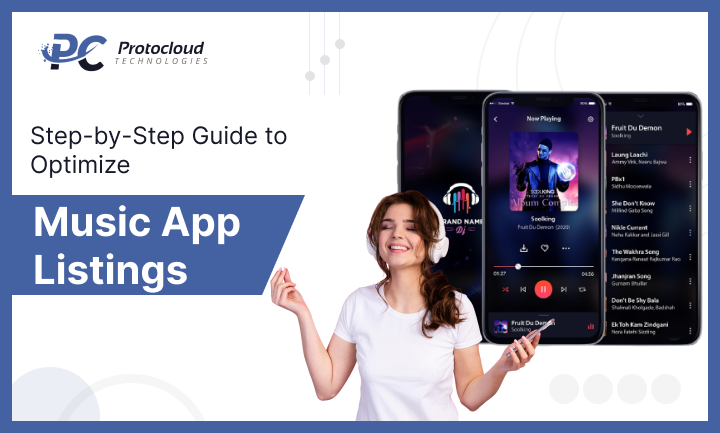




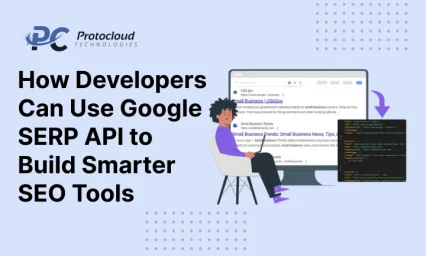
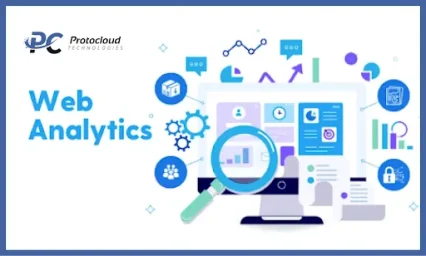
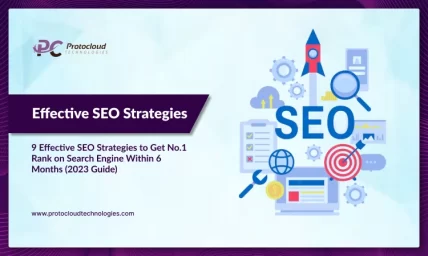
Leave a Reply